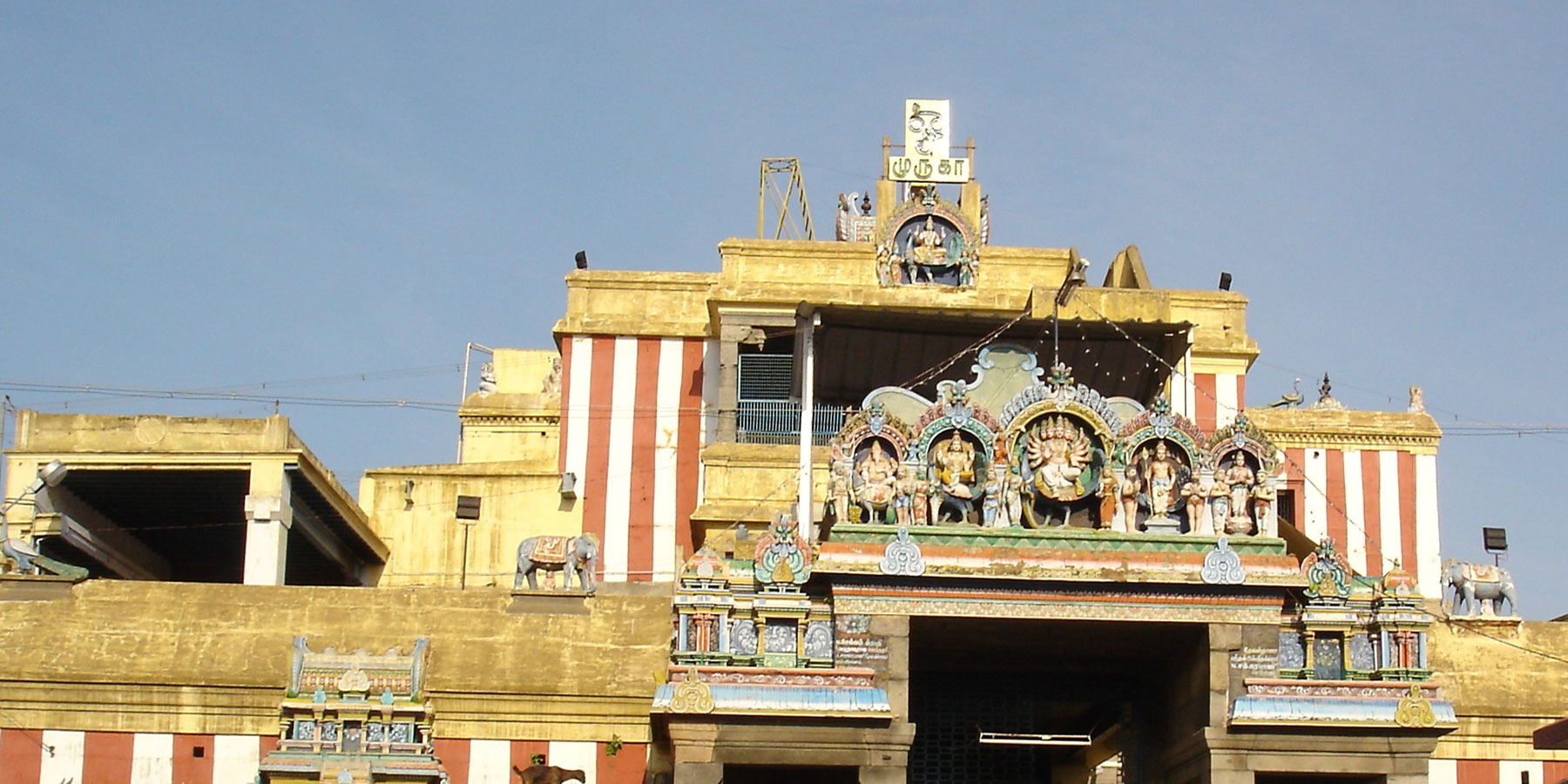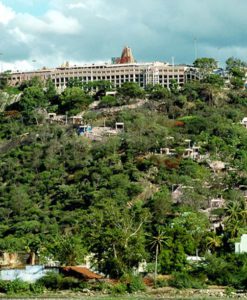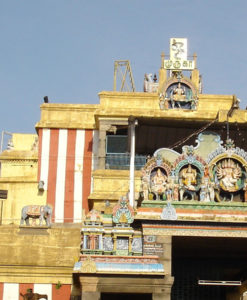No products in the cart.
Swamimalai is a sylvan village, situated about five kilometers west of Kumbakonam on the banks of a tributary of river Cauvery. The temple is situated very close to the bus stand and the railway station and is about two kilometers away. It is well connected to and surrounded by important places like Kumbakonam, Tiruvidaimarutur, Mayiladuthurai, Papanasam, Tanjavur etc.
Swamimalai Murugan Temple
Swamimalai is fourth among the arupadai veedu or sacred shrines dedicated to Lord Murugan. The presiding deity here expounded the meaning of the Pranava mantra OM to his own Father Lord Shiva Himself.
Mythology says that saint Bhrugu before commencing an arduous tavamor penance, got the boon that anybody disturbing his mediation will forget all his knowledge. Such was the power of the penance that the sacred fire emanating from the head of the saint reached up to the heavens, and the frightened devas surrendered to Lord Siva praying for his grace. The Lord extinguished the sacred fire by covering the saint’s head by hand. With the saint’s penance thus disturbed the Lord became oblivious of all his knowledge and is said to have regained them by learning the Pranava mantra from Lord Muruga at this shrine.
Once when Brahma, the lord of all creations was proceeding to Kailasa, the ever-playful child Lord Muruga asked him for the meaning of the Pranava OM. When Brahma admitted his ignorance, the Lord imprisoned him. With Brahma imprisoned, all creations came to a standstill and the devas prayed to Lord Siva to get Brahma released. When Muruga insisted that the imprisonment was a just punishment for the ignorance of Brahma, Lord Siva asked him whether he himself knew the meaning of the primordial Pranava OM. Lord Muruga said that he knew the meaning of OM and can expound it to the latter only if he can accept him as guru and listen to the exposition as a devoted disciple. As Lord Shiva acceded to the request of Lord Muruga and heard the exposition of OM as a disciple, the place came to be known as Swamimalai and the presiding deity as Swaminathan.
In Swamimalai, Muruga is known as “Balamurugan” and “Swaminatha Swami”. The temple is built on an artificial hill. In Tamil language, such an artificial hill is called “Kattu Malai”. Another name for this place is “Thiruveragam”. The temple has threegopuram (gateway towers) and three precincts. Out of the three precincts, one is located in the basement, the second at midway to the top of the hillock and the third on the hillock, around the sanctum of the Swaminathaswamy shrine. There are sixty steps and each one is named after the sixty Tamil years. The first thirty steps lead to the second precinct of the temple. The image of Swaminathaswamy is 6 ft (1.8 m) tall.
There are golden armours, golden crowns and a diamond lance for Swaminathaswamy. There is a shrine of Vinayagar outside the first precinct. The central shrine houses the granite image of Swaminathaswamy. The first precinct has the images of Dakshinamurthy, Durga, Chandikeswarar and the festival image of Swaminathaswamy. The images of Sundaresawar as lingam (Shiva) and Meenakshi (Parvati) are located down hill and the first precinct around their shrines have the images of Dakshinamurthy, Durga, Chandikeswarar and Navagrahas. The second precinct and the largest one of the temple houses a marriage hall and the chariot of the temple. The temple is one of the most visited temples in the district.
Monday-Friday: 9:00 am to 12:00 pm & 4:00 pm to 7:00 pm
Saturday, Sunday & Holidays: 9:00 am to 7:00 pm
10 day Tirukarthikai festival in November-December is the important festival of the temple drawing crowd in lakhs. 10 day Chithirai Brahammotsavam in April-May, Vaikasi Visagam in May-June, Aavani Pavithrotsavam in August-September, 10 day Navaratri in September-October, Aipasi Skanda Sashti in October-November, 10 day Margazhi Tiruvadirai in December-January, Thai Poosam in January-February, Panguni Valli Kalyanam in March-April are the other festivals celebrated in the temple. Of these, the festivals falling in Chithirai, Karthikai and Thai Tamil months are inaugurated with flag hoisting. Thirupadi festival for the steps is celebrated on the English New Year day. Also, monthly Kruthika star days, Monthly Tamil new days, New moon and full moon days, Sashti days, Visakam star days, Tamil and English New Year days, Deepavali and Pongal are devotionally celebrated in the temple. The crowd in the temple is huge on Tuesdays and all festival days.
There are no hills in Thanjavur district. It is in this region, Swamimalai stands. As hills are the abodes of Lord Muruga, He is gracing from this hill temple. There are 60 steps to reach the hill temple representing the 60 Tamil Years. These are considered at par with the importance of 18 steps in Sabarimala. The deities of the Tamil years are praying to Lord Muruga in the form of steps. Hence, the Padi Puja (puja for the steps) is conducted on Tamil and English New Year days with coconuts, fruits and singing hymns.







